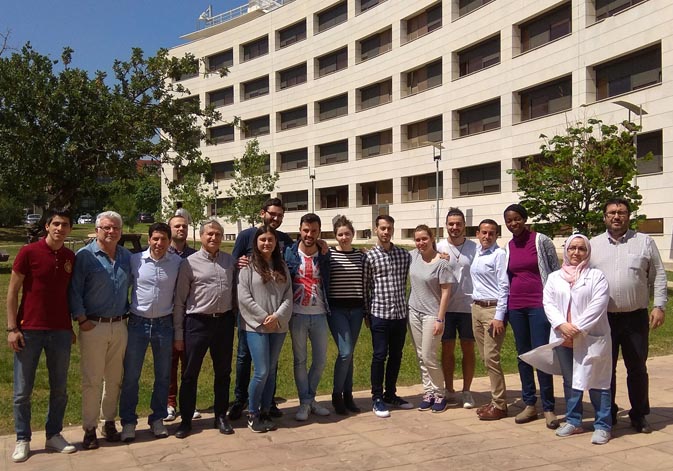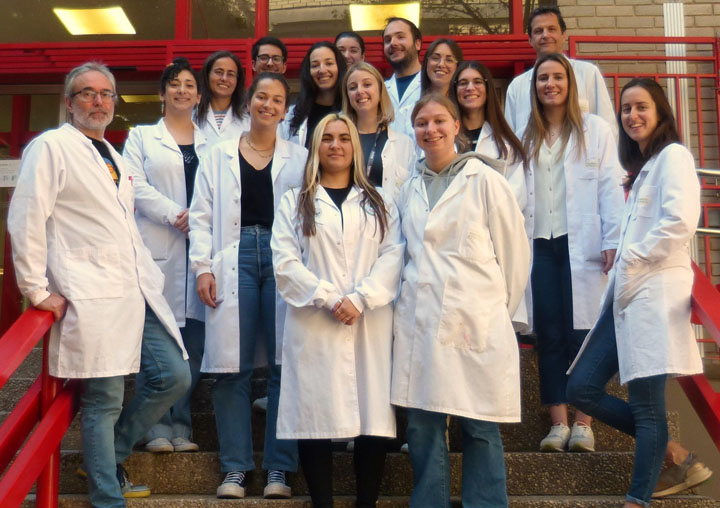The cause of death of two important humanists from the Italian Renaissance has been identified
- Scientific Culture and Innovation Unit
- May 14th, 2018

Agustín Pastor and Miguel de la Guardia, researchers of the Department of Analytical Chemistry of the Universitat de València, have participated in the international multidisciplinary study that has found scientific evidence on the cause of death of the philosopher Giovanni Pico della Mirandola and the poet Angelo Poliziano. They were two of the most important humanists of the Italian Renaissance. The study was published in the Journal of Forensic and Legal Medicine and concludes that at least della Mirandola was poisoned with arsenic.
The cause of death of both thinkers was contentious for many centuries and the complot and poisoning theory had become more plausible over the years. “Our work helps to clear up the mystery of the deaths of these figures, developing a multidisciplinary task among different European institutions within the collaborative spirit of ArchaeChemis laboratory” explains Miguel de la Guardia, a researcher of the Department of Analytical Chemistry of the Universitat de València.
Anthropological analysis, documentary evidence, carbon 14 dating technology and NDA body tests have permitted the identification of Pico della Mirandola’s corpse. The analysis results support the hypothesis that the humanist was poisoned with arsenic. The exam did not reveal pathological lesions nor evidence of syphilis. He was supposed to have died of this disease because of the fever and ravings he suffered before dying. The analysis of heavy metals carried out on bones and mummified tissues revealed that the remains of the philosopher contained potentially lethal levels of arsenic. This supports the theory of a poisoning that had been extracted from documentary sources.
However, the results published in the article (to which the first signatory is Gianni Gallello) have not confirmed that the poet Angelo Poliziano died due to acute arsenic poisoning, but they suggest a possible continuous exposure to this substance caused by environmental factors or medical treatments. In addition, as a consequence of a bad preservation of Poliziano’s corpse, we cannot assure that biochemical processes have not modified the elemental bone composition after a post-mortem process.
This study is part of ArchaeChemis archaeological line of research, particularly on the development of analytical techniques that allow clearing up the deaths of old individuals or populations. This laboratory analyses arsenic poisonings or syphilis cases when the disease was cured with mercury.
Research group
ArchaeChemis studies organic and inorganic materials, develops new methodological and analytical solutions for Archaeology and Cultural Patrimony in general. It also works in other areas such as Forensic Sciences, Geology and Environmental Sciences. The research personnel of ArchaeChemis has developed several methodological proposals using analytical methods in old materials and collaborating with Spanish and international institutions. ArchaeChemis (http://www.uv.es/archaechemis) was stablished as a result of Gianni Gallello’s doctoral thesis at the Universitat de València and develops its research activity within SOLINQUIANA group (https://www.uv.es/solinqui/).
Article:
Gianni Gallello, Elisabetta Cilli, Fulvio Bartoli, Massimo Andretta, Lucio Calcagnile, Agustin Pastor, Miguel de la Guardia, Patrizia Serventi, Alberto Marino, Stefano Benazzi, Giorgio Gruppioni: «Poisoning histories in the Italian renaissance: The case of Pico Della Mirandola and Angelo Poliziano». Journal of Forensic and Legal Medicine Volume 56, May 2018, Pages 83-89 doi: 10.1016/j.jflm.2018.03.016.
File in: Internacionalització recerca , Grups de recerca , Difusió i comunicació científica , Cultura Científica , Recerca, innovació i transferència , Investigació a la UV
















